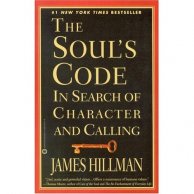Psychology for Lawyers |
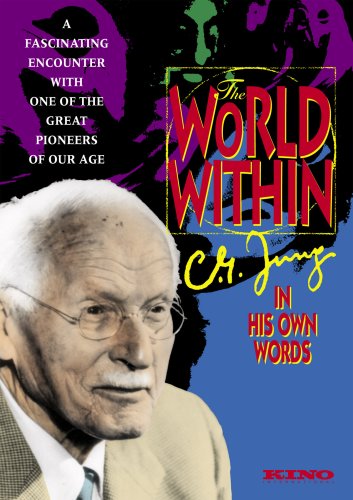 |
"The World Within: C.G. Jung In His Own Words" [DVD, 1990] [approx. 52 mins.]
[class presentation: skip from 49:22 mins. to 58:06 mins.; a long segment about Jung's small, four-towers castle at Bollingen, on Lake Zurich. Jung referred to the castle as Bollingen Tower.] |
Religion,
Myth, Science, Truth
[2:35:31 mins.] [Jordan Peterson] [locating Jung
in the context of religions; "nobody thinks like he thought";
"Jung is terrifying"] [1:58:04 mins. to 2:04:52 mins.]
Alternatives to the Jung Documentary, "The
World Within"
![]()
Face
To Face | Carl Gustav Jung (1959)
[38:04 mins.] [excellent quality video]] Alternative
Posting [39:27 mins.] [BBC,
1959] [Jung talking about his relationship with Frued, at 16:27 mins.]
Soul,
Psyche & The Inner Journey
[1:14:38 mins.] [selected footage of C.G. Jung,
Michael Tsarion, Marie-Louise von Franz, Marion Woodman] [class presentation
can end at 43:30 mins.] [Jung's comments begin at 0:45 mins., end at
5:14 mins. (rather interesting)] [Jung speaks about the reality of the
psyche, images, and phantasy--the "world within"] [Michael
Tsarion begins at 7:52 mins., ends at 14:12 mins.; introducing the shadow,
and talks about repression; Tsarion on the "Difficulty at Looking
at One's Self," 14:12 mins to 25:33 mins., reference to our "hiding
from ourselves"] [Marie-Louise von Franz on the shadow, 25:33 mins
to 27:39 mins.] [Marion Woodman, "A Few Guides for Working with
the Unconscious," 28:43 mins. to 38:20 mins. when Woodman begins
to direct her attention to dreams, and this commentary ends at 43:30
mins.]
Jung
on Film: Richard Evans Interviews (1957)
[1:17:04 mins.]
The
Life of Carl Jung
[20:40 mins.]
Sea
of Faith
[9:21 mins.] [BBC documentary] Pt2
[7:52 mins.]
Carl
Jung: The Wisdom of The Dream, Vol 1, A Life of Dreams
[51:33 mins.]
Psychology for Lawyers Resources
![]()
Jung's Work Explained | Jungian Analysts Talking About Therapy | Jung's Red Book
The Unconscious | Persona & Shadow | Individuation | Psychological Types and Functions
Collective Unconscious | Dreams | Complexes | Archetype of the Self
A Guide to Jung's Comments in "The World Within"
![]()
![]() On the Reality of the Psyche
On the Reality of the Psyche
Jung on the Reality of the Psyche"The reality of psyche is the conceptual and experiential axis around which Jungian psychology is organized; everything else such as archetypes and collective unconscious, the components of psyche, as well as psyche's teleological or purposeful function, originate from this primary understanding. The reality of psyche means exactly that. It is real and not just a metaphorical construct . . . ."
--Stephanie Buck, The Reality of Psyche: The Foundation of Analytical Psychology, C.G. Jung Society of Vermont
[1:50 mins.]
The
Reality of Psyche: The Foundation of Analytical Psychology
[Stephanie Buck, C.G. Jung Society of Vermont]
Reconstructing
Jung
[Greg Mogenson, Harvest: Journal for Jungian
Studies]
![]() On the Idea that We Are Born Into a Pattern
On the Idea that We Are Born Into a Pattern
"We are born with a psychological heritage as well as a biological heritage, according to Jung. Both are important determinants of behavior and experience: “just as the human body represents a whole museum of organs, each with a long evolutionary period behind it, so we should expect to find that the mind is organized in a similar way. It can no more be a product without history than is the body in which it exists.”
--;C.G. Jung, Man and His Symbols, 1964, p. 67
"The collective unconscious, which results from experiences that are common to all people, also includes material from our prehuman and animal ancestry. It is the source of our most powerful ideas and experiences." —Transpersonal Pioneers: C.G. Jung, Sofia University {website}
![]() On Philemon: One of Jung's Imaginal Figures
On Philemon: One of Jung's Imaginal Figures
"Philemon and other figures of my fantasies brought home to me the crucial insight that there are things in the psyche which I do not produce, but which produce themselves and have their own life. Philemon represented a force which was not myself. In my fantasies I held conversations with him, and he said things which I had not consciously thought. For I observed clearly that it was he who spoke, not I. He said I treated thoughts as if I generated them myself, but in his view thoughts were like animals in the forest, or people in a room, or birds in the air, and added, 'If you should see people in a room, you would not think that you had made those people, or that you were responsible for them.' It was he who taught me psychic objectivity, the reality of the psyche. Through him the distinction was clarified between myself and the object of my thought. He confronted me in an objective manner, and I understood that there is something in me which can say things that I do not know and do not intend, things which may even be directed against me.
Psychologically, Philemon represented superior insight. He was a mysterious figure to me. At times he seemed to me quite real, as if he were a living personality."
--C.G. Jung, Memories, Dreams, Reflections 183 (New York: Random House/Vintage Books, 1965)
"The unconscious is like a parallel universe, peopled by interior selves and figures that correspond in part to the people of our day world, but who are by no means reducible to external realities."
--David Tacey, How To Read Jung 12 (New York: W.W. Norton & Co., First American ed., 2007)
Lionel
Corbett on Jung, Philemon and the Red Book
[12:35 mins.]
![]() On Archetypes and the Collective Unconscious
On Archetypes and the Collective Unconscious
In Memories, Dreams, Reflections, Jung talks about coming around to the idea that Freud's idea of the personal unconscious was incomplete. He posits the presence of "a history of successive layers of consciousness" that must include "an altogether impersonal nature underlying" the psyche that is a part of the psyche, thus, "a collective a priori beneath the personal psyche." Jung recognizes these "traces of earlier modes of function" as "forms of instinct" that he began to identify as archetypes.
--C.G. Jung, Memories, Dreams, Reflections 161 (New York: Random House/Vintage Books, 1965)
"The archetype is a force. It has an autonomy and it can suddenly seize you. It is like a seizure. Falling in love at first sight is something like that."
--C.G. Jung, in "The Houston Films," in C.G. Jung Speaking: Interviews and Encounters 276-352, at 294 (Princeton, New Jersey: Princeton University Press, 1977)
"To [Freud] the unconscious was a product of consciousness, and simply contained all the remnants; it was a sort of store-room where all the things consciousness had discarded were heaped up and left. To me the unconscious then was already a matrix, a basis of consciousness of a creative nature, capable of autonomous acts, autonomous intrusions into consciousness. In other words, I took the existence of the unconscious for a real fact, a real autonomous factor capable of independent action."
--Jung, in "The Houston Films," id, at 339
"I began to see that the structure of what I then called the 'collective unconscious' is really a sort of agglomeration of . . . typical images, each of which has a numinous quality. The archetypes are, at the same time, dynamic; they are instinctual images that are not intellectually invented. They are always there and they produce certain processes in the unconscious one could best compare with myths. That's the origin of mythology. Mythology is a dramatization of a series of images that formulate the life of the archetypes. . . . [M]an is not complete if he is not conscious of that aspect of things.
And so, you see, a man is not complete when he lives in a world of statistical truth. He must live in the world of his mythological truth . . . ."
--Jung, in "The Houston Films," id, at 347-348
| Resources on the "Collective Unconscious" |
![]() On Jung's Typology of Types
On Jung's Typology of Types
"[I]t took me quite a long time to discover that there is another type than the thinking type . . . . There are other people who decide the same problems I have to decide, but in an entirely different way. They look at things in an entirely different light, they have entirely different values. There are, for instance, feeling types. And after a while I discovered that there are intuitive types. . . . And the last, and the most unexpected, was the sensation type. And only later I saw that these are naturally the four aspects of conscious orientation.
You see, you get your orientation, you get your bearings in the chaotic abundance of impressions, by the four functions.
* * * *
I also found that the study of types gives you a lead as to the personal nature of the unconscious, its personal quality in a given case. If you take an extravert you will find his unconscious has an introverted quality, because all the extraverted qualities are played out in his consciousness and the introverted are left in the unconscious . . . . That gave me a lead of diagnostic value, it helped me to understand my patients."
--C.G. Jung, in "The Houston Films," in C.G. Jung Speaking: Interviews and Encounters 276-352, at 341-342 (Princeton, New Jersey: Princeton University Press, 1977)
| Resources on "Psychological Functions" |
![]() Persona
Persona
"[T]he persona may be counted among Jung's less abstruse and more practical conceptions. From the Latin word for an actor's mask, which in turn represents his role within the play, the persona, in the psychological meaning coined by Jung, is that part of the personality developed and used in our interactions, our conscious outer face, our social mask. Our persona may be a well-developed, socially adapted face—the famous writer, the devoted spouse, the rising young executive—or, on the contrary, a well-developed but socially unadapted face—the rebellious artist, the argumentative gadfly, the stubborn curmudgeon—but it is still the persona, a face and a role shown to others and used to give form to our outward sense of self."
--Robert H. Hopcke, A Guided Tour of the Collected Works of C.G. Jung 86 (Boston: Shambhala, 1989)
"Lawyers in a corporate environment are to appear at work in navy-blue or dark-gray suits, as the colors brown and green are definitely 'out.' If a lawyer showed up at his corporate firm in a see-through cellophane suit and ponytail, his colleagues might have a difficult time taking him seriously as a 'big-time' corporate professional. When outfitted according to society's expectations, including adopting appropriate speech, body language and demeanor, he identifies himself and his status or position and facilitates professional relations with his boss, peers and clients. . . . Within the parameters of his specific occupational expectations, a person's individuality might be expressed by his choice of tie, his office furnishings, or where he takes clients to lunch, all of which make up his professional personality. His persona makes him plausible in the social role that he is playing."
--Eugene Pascal, Jung to Live By 47-48 (New York: Warner Books, 1992)
| Persona|Shadow: Course Assignment for "Psychology for Lawyers" |
![]() Repression
Repression
"A content [of the conscious mind] sinks below the level of consciousness and thus becomes unconscious. That is Freud's view too, only he says it sinks down because it is helped, it is repressed from above. That was my first point of difference with Freud. I said there were cases in my observation where there was no repression from above, but the thing itself is true. Those contents that became unconscious had withdrawn all by themselves, they were not repressed. On the contrary, they have a certain autonomy. I discovered the concept of autonomy because these contents that disappear have the power to move independently of my will." —Jung, in "The Houston Films, " id., at 283
![]() "The Red Book"
"The Red Book"
Jung describes, in Memories, Dreams, Reflections, the psychological turmoil and the engagement with the unconscious that lead to the writing, and later, the production of The Red Book:
"Toward the autumn of 1913 the pressure which I had felt
was in me seemed to be moving outward . . . .
* * * *
To the extent that I managed to translate the emotion into images—that is to say, to find the images which were concealed in the emotions—I was inwardly calmed and reassure3d. Had I left those images hidden in the emotions, I might have been torn to pieces by them. There is a chance that I might have succeeded in splitting them off; but in that cause I would inexorably have fallen into a neurosis and so been ultimately destroyed by them anyhow. As a result of my experiment I learned how helpful it can be, from the therapeutic point of view, to find the particular images which lie behind the emotions.
I wrote down the fantasies as well as I could, and made an earnest effort to analyze the psychic conditions under which they had arisen. But I was able to do this only in clumsy language. First I formulated the things as I had observed them, usually in 'high-flown language,'for that corresponds to the style of the archetypes. archetypes speak the language of high rhetoric, even of bombast. It is a style I find embarrassing; it grates on my nerves . . . . But since I did not know what was going on, I had no choice but to write everything down . . . . Below the threshold of consciousness everything was seething with life.
From the beginning I had conceived my voluntary confrontation with the unconscious as a scientific experiment which I myself was conducting and in whose outcome I was vitally interested. Today I might equally well say that it was an experiment which was being conducted on me. . . . I had been challenged by fate. Only by extreme effort was I finally able to escape from the labyrinth.
In order to grasp the fantasies which were stirring in me 'underground,' I knew that I had to let myself plummet down into them, as it were. I felt not only violent resistance to this, but a distinct fear. . . . A cogent motive for making the attempt [the descent into the unconscious] was the conviction that I could not expect of my patients something I did not dare to do myself. . . . I was well aware that the so-called helper—that is, myself—could not help them [patients] unless he knew their fantasy material from his own direct experience, and that at present all he possess were a few theoretical prejudices of dubious value. This idea—that I was committing myself to a dangerous enterprise not for myself alone, but also for the sake of my patients—helped me over several critical phases."
--C.G. Jung, Memories, Dreams, Reflections 175, 177-179 (New York: Random House/Vintage Books, 1965)
| Jung's Red Book :: resources compiled for a class assignment |
![]() Therapy
Therapy
![]() Dreams, and Their Analysis
Dreams, and Their Analysis
"The dream is a revelation from the psyche . . . . It is a transpersonal message from the depths, and we should adopt a position of humility towards it. Jung believed the dream had to be approached with surprise and wonder, and we should be prepared for insights, both pleasant and unpleasant, that would be made known to us."
--David Tacey, How To Read Jung 13-14 (New York: W.W. Norton & Co., First American ed., 2007)
| Dreams :: web resources compiled for Psychology for Lawyers |
For an informative look at dreams and our relationship with them, see the documentary, "Dream Tending" (with Stephen Aizenstat) [DVD, 53:00 mins.] [2006] [available in the Law School Library]
![]() Mandalas
Mandalas
"The mandala is just one typical archetypal form. It is what they called in alchemy the quadratura circuli, the square in the circle or the circle in the square. It is an age-old symbol that goes right back to the prehistory of man. It is found all over the earth and it expresses either the deity or the self. . . .
The mandala is a very important archetype. It is the archetype of inner order . . . . It expresses the fact that there is a center and a periphery, and it tries to embrace the whole. It is the symbol of wholeness. So you see, when during the treatment there is a great disorder and chaos in a man's mind, this symbol can appear in the form of a mandala in a dream, or else he makes imaginary, fantastical drawings, or something of that sort. The mandala appears spontaneously as a compensatory archetype, bringing order, showing the possibility of order. It denotes a center which is not coincident with the ego but with the wholeness which I call the self--this is the term for wholeness. I am not whole in my ego, my ego is a fragment of my personality. The center of a mandala is not the ego, it is the whole personality, the center of the whole personality."
--Jung, in "The Houston Films," id, at 327-328
Mandalas
and Jung
[4:00 mins.; video]
Mandalas
in The Red Book: Walter Schwery
[46:22 mins.]
Ten
Quotations by Jung about Mandalas
[Stephen Parker]
Jung
and Mandala
[Carl Jung Resources, 2014] ["Mandala is a
graphical representation of the center (the Self for Jung). It can appear
in dreams and visions or it can be spontaneously created as a work of
art."]
Jung's
Psychological Diagnosis Using Mandalas
[by the co-founder of Fractal Enlightenment]
![]() Self | Ego (Videos)
Self | Ego (Videos)
"The Self, according to Jung, was the sum total of the psyche, with all its potential included. This is the part of the psyche that looks forward, that contains the drive toward fulfillment and wholeness. In this, the Self was said to drive the process of individuation, the quest of the individual to reach his or her fullest potential." —"The Jungian Model of the Psyche," Journal Psyche [online text]
"Jung's term ego is virtually identical to Freud's; it is the centre of our conscious identity and selfhood. However, for Jung, the task of the ego is to transform itself by integrating as many contents of the unconscious as possible, in which case it begins to function as an ancillary organ of the Self.
* * * *
The Self is an archetype which expresses the totality of the psyche and includes the ego and the unconscious . . . .
* * * *
Jung postulated a transcendental element that facilitates our journey towards wholeness. This element, or archetype, Jung calls the Self, and it acts as an invisible guarantor of the ego as it makes its journey through life. . . . For Jung, the ego is the centre of consciousness, the focus of our personal identity, whereas the Self is the centre of the entire psyche, conscious and unconscious, and thus the focus of our transpersonal identity. . . .
[The Self] has no equivalent in the Freudian system . . . .
The Self is virtually a transcendental concept, and it cannot be know directly by the ego, but only indirectly through symbol, dream and myth."
--David Tacey, How To Read Jung 17, 25, 47, 48 (New York: W.W. Norton & Co., First American ed., 2007)
Jung on the Self
in Man & His Symbols
[5:38 mins.] [audio]
Dr. Michael V.
Adams on Jung and the Ego
[13:48 mins.] [Dr. Adams's brief presentation on
the ego runs from 1:41 mins. to 2:54 mins.]
C.G. Jung Concepts
Discussed: Ego
[10:30 mins.] [Dick Pearson & Jungian analyst
D. Stephenson Bond]
Self
in Jungian Psychology
[Wikipedia]
Jung: On the Ego
[from Daryl Sharp's Jung
Lexicon]
![]() Transference | Projection
Transference | Projection
[Jung observes that] "when you talk to an individual and he gives you insight onto his inner preoccupations, interests, emotions—in other words, hands over his personal complexes—you [the therapist] gradually get into a position of authority whether you like it or not. You become a point of reference, you are in possession of all the important items of a person's development. . . . ." In this "emotional relationship to the analyst," Freud observed what he called the transference" which is a central problem in analytical psychology. It is just as if these people had handed over their whole existence, and that can have very peculiar effects upon the individual. Either they hate you for it, or they love you for it, but you are never indifferent to them. When they hand out such material ['something important, emotionally important'] its context is associated with all the most important persons in the life of a patient. The most important persons are usually father and mother--that comes up from childhood. The first troubles are with the parents as a rule. . . . [I]t is just as if the analyst had taken the place of the father, or even of the mother. . . . This is what one calls transference, a typical instance of project. . . .
This means we have to work through that condition in the hope of reaching a situation where the patient is able to see that I am not the father, not the other, that I am an ordinary human being."
--Jung, in "The Houston Films," id, at 343-345
| Transference: A "Psychology for Lawyers" Course Assignment |
Projection
[4:07 mins.] [excerpt from Man & His Symbols]
Projection
[4:19 mins.] [James Hollis]
![]() Becoming What We Already Are From the Beginning
Becoming What We Already Are From the Beginning
This idea of becoming what we already are, or as Jung puts it in the documentary, "The World Within": "Man becomes what he is meant to be . . . . But most get stuck." Or, a different formulation of this idea that we get stuck: "Jung sought to show that the psyche was urging us onward to create a new and broader personality." --David Tacey, How To Read Jung 4 (New York: W.W. Norton & Co., First American ed., 2007). J
Jung's comment is explored in James Hillman's The Soul's Code: In Search of Character and Calling (New York: Random House, 1996)
![]() On the Fantasy of Living Without Myth
On the Fantasy of Living Without Myth
Jung observes that the idea that we can live without myth is a "mutilation of the human being" and a "disease."
C. G. Jung about
the Insanity of Living Without Myth
[1:09 mins.] [from Jung's 1957 interview with Richard
Evans]
Rollo May wrote a book about myth which you may find interesting.
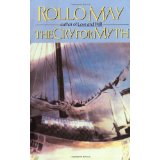 |
Rollo May, The Cry for Myth (New York: W.W. Norton, 1991)
Rollo May:
We Lack Mystery |
Michael Meade's Work on Myth: An Introduction to Myth
Myth is the Ongoing
Creation
[6:31 mins.] ["Myth is trying to bring the
eternal into time."]
Why the World
Doesn't End
[6:48 mins.]
Myth and the End
of Time
[14:06 mins.]
Introductions to Jung and His Psychology![]()
Basic introductory books on Jung's ideas are plentiful. Two that I might recommend are:
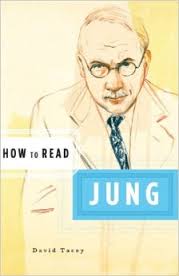 |
David Tacey, How To Read Jung (New York: W.W. Norton & Co., First American ed., 2007) |
| Daryl Sharp, Jungian Psychology Unplugged: My Life as an Elephant (Toronto: Inner City Books, 1998) |
Additional Introductory Works to Consider: Peter O'Connor, Understanding Jung, Understanding Yourself (New York: Paulist Press, 1985); Robin Robertson, Beginner's Guide to Jungian Psychology (Lake Worth, Florida: Nicolas-Hays, Inc., 1992); Murray Stein, Jung's Map of the Soul: An Introduction (Chicago: Open Court,1998); Eugene Pascal, Jung to Live By (New York: Warner Books, 1992).
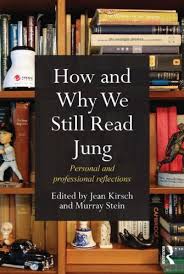 |
A different kind of introduction to Jung's work--
Jean Kirsch & Murray Stein, How and Why We Still Read Jung: Personal and Professional Reflections (New York: Routledge, 2013) |
| On Reading Jung ::
James R. Elkins (2013)|

